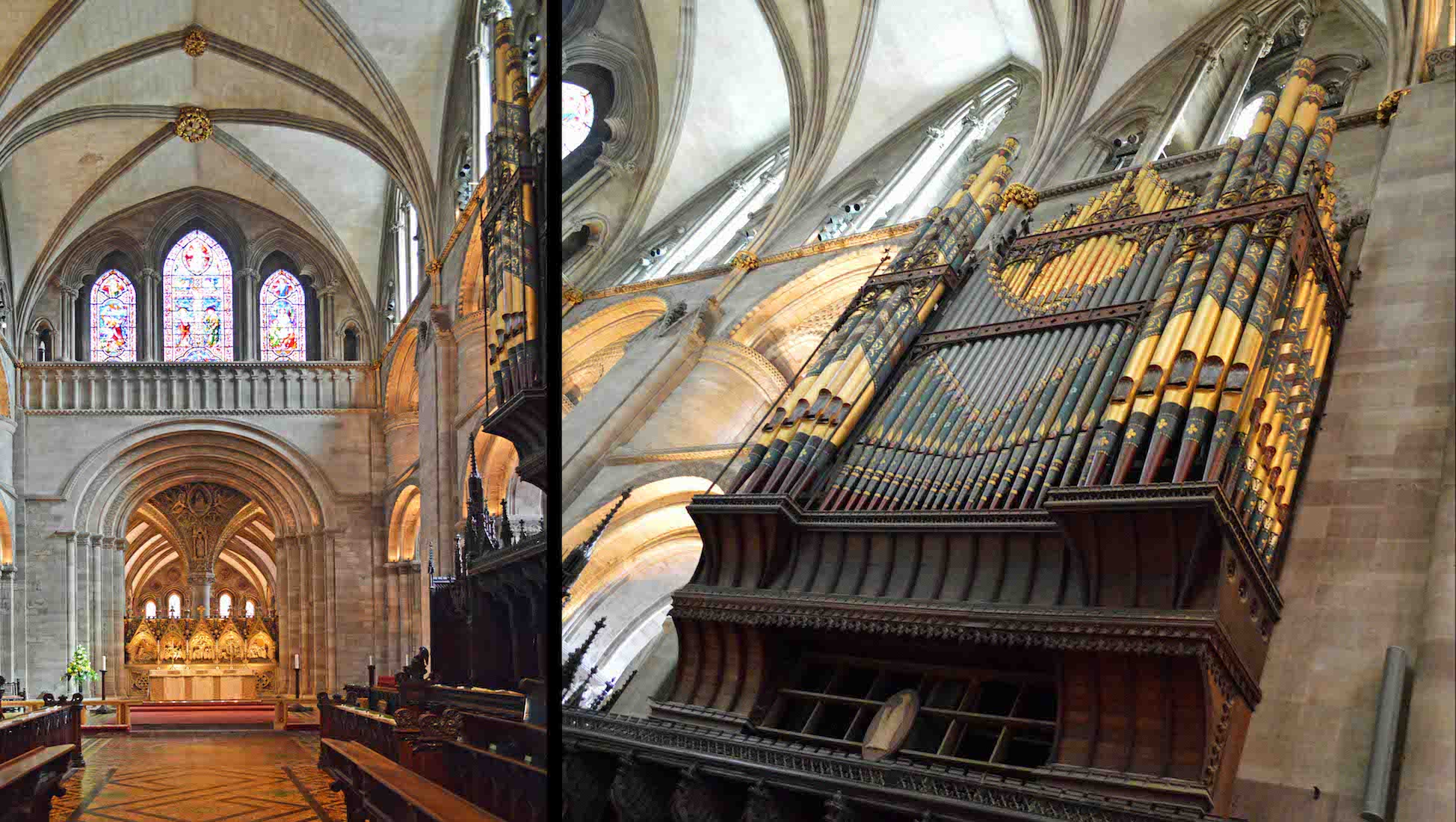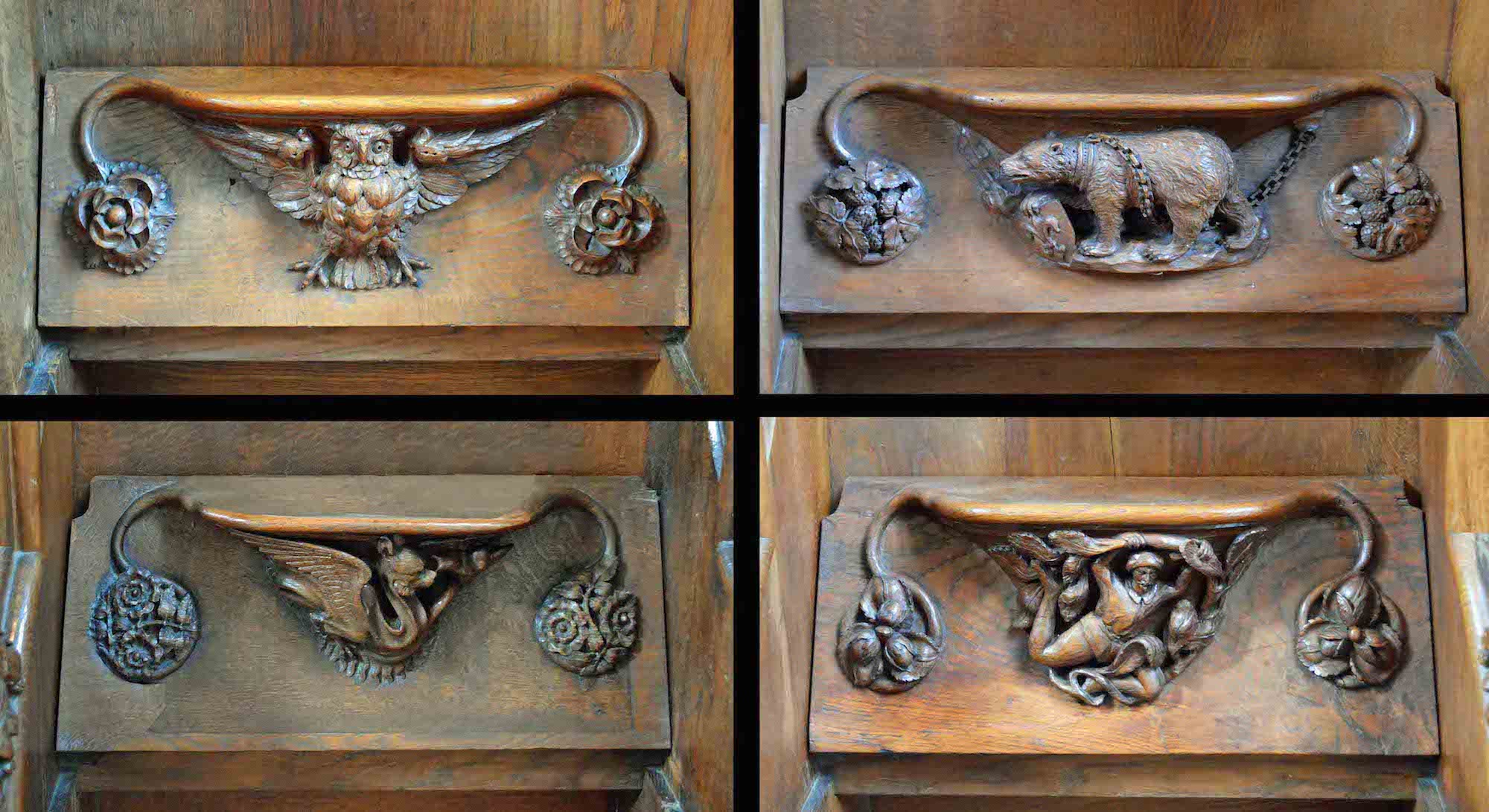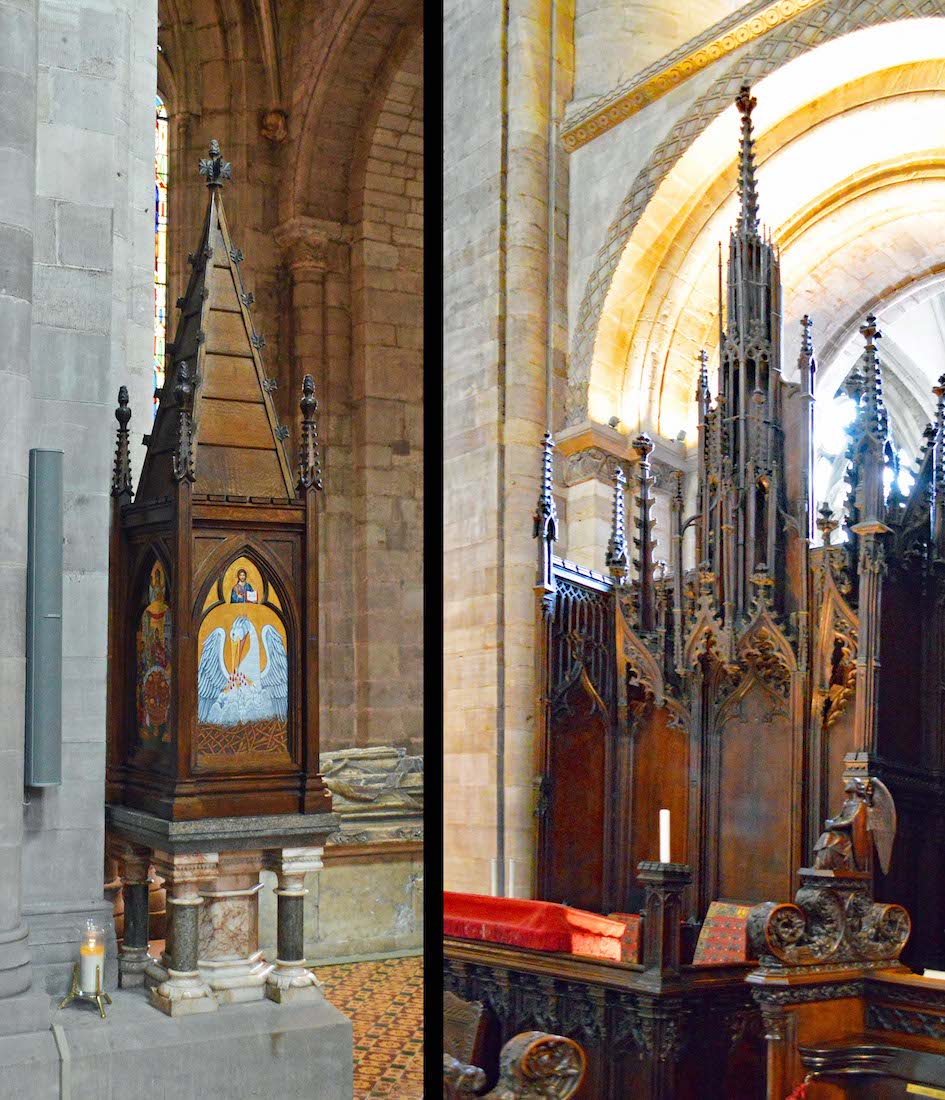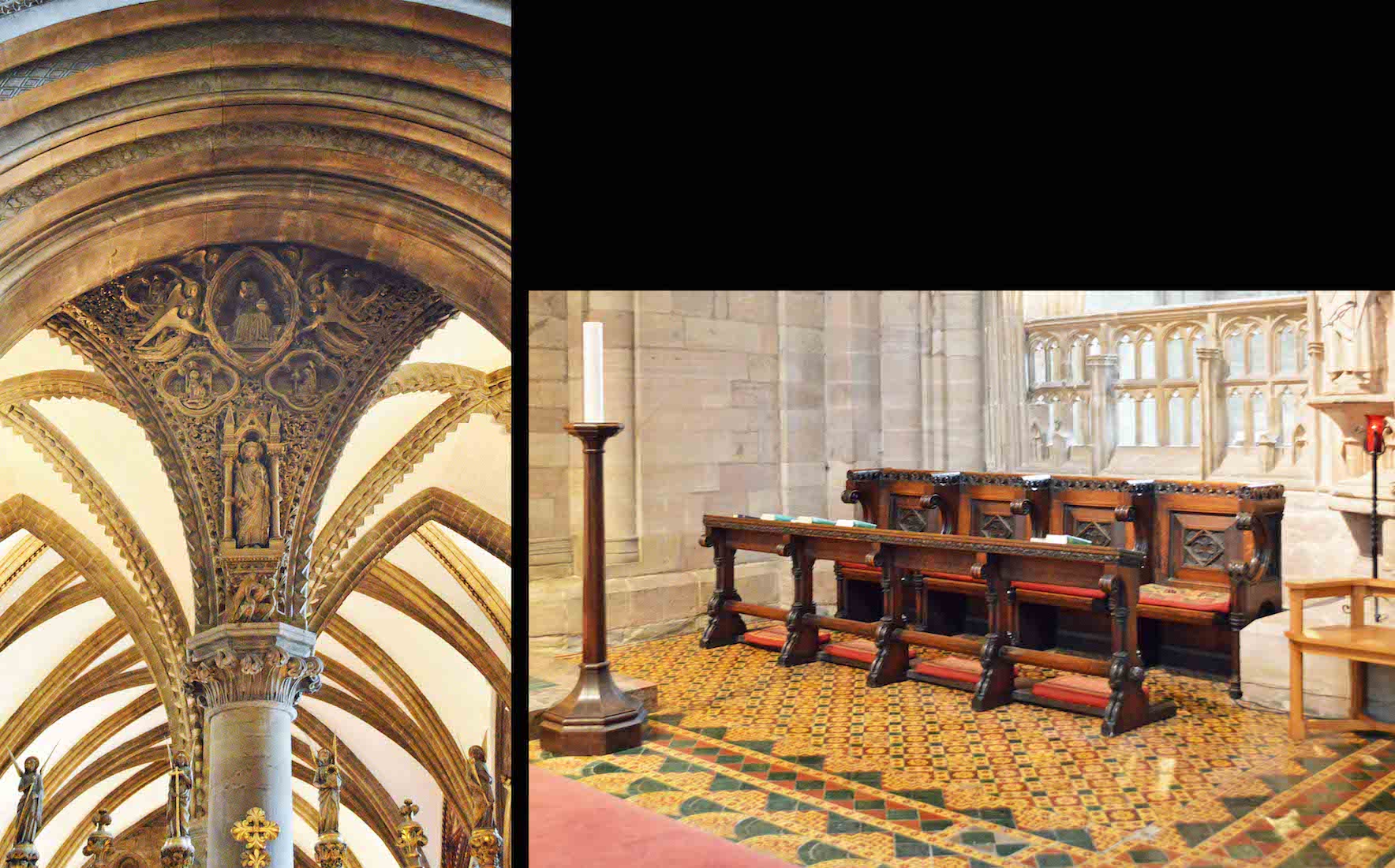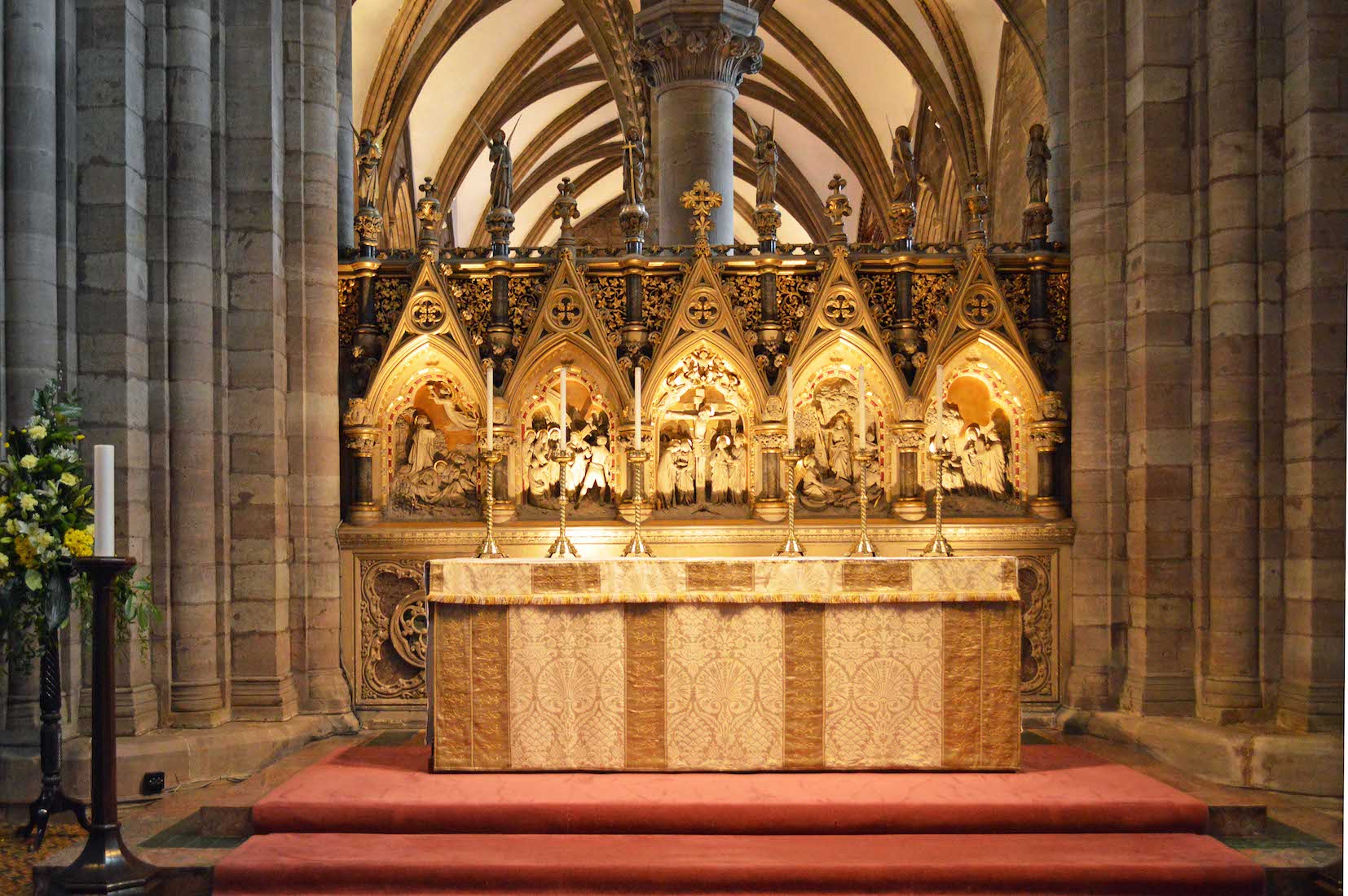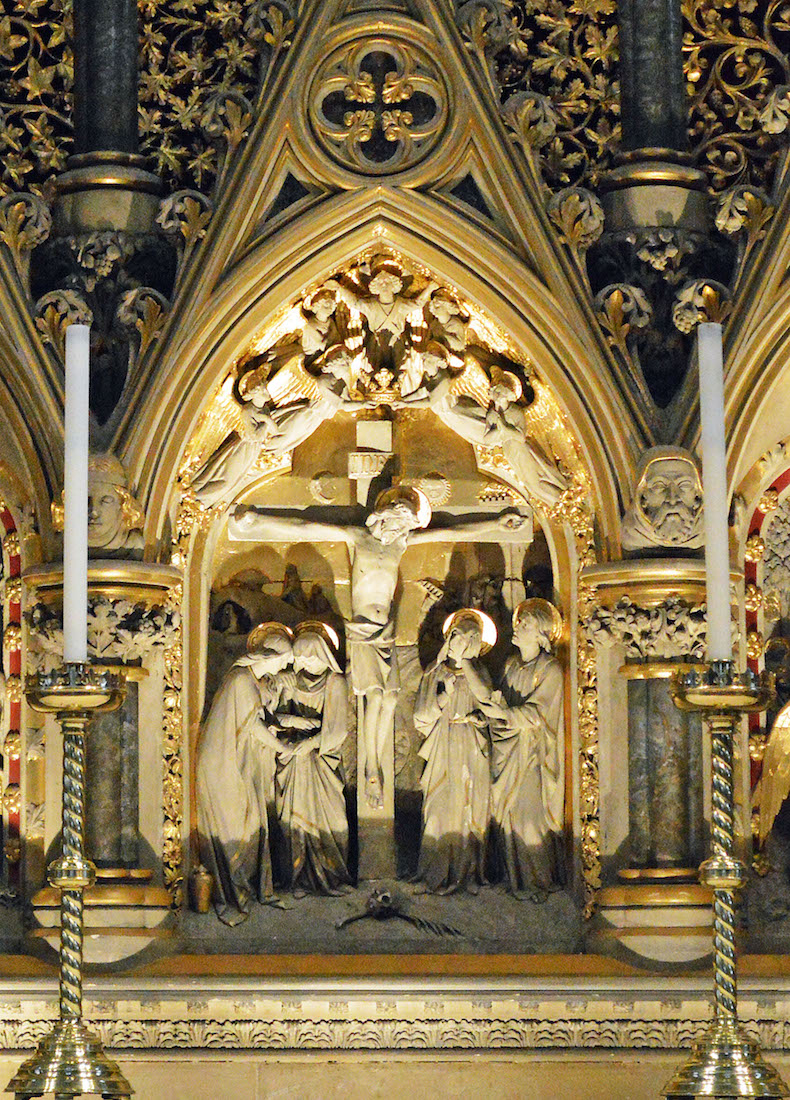Above the choir at right are the pipes of the organ. This organ was built by Henry Willis in 1892, replacing an earlier instrument by Gray and Davison dating from 1862–64. The pipe-rack which forms the case of today’s instrument also dates from the time of the Gray and Davison instrument and was designed by Gilbert Scott. The console was orginally situated within the organ case and the instrument was the first cathedral organ in the country to have adjustable pistons, which had recently been invented by Willis. Further modifications were made in 1909 by Henry Willis II, including the addition of 32 ft Bombarde and 16 ft Ophicleide stops to the Pedal organ. By 1933 the organ’s pneumatic action was wearing out and the instrument was rebuilt in a conservative fashion by Henry Willis III. A new detached console in the characteristic style of the builder was provided, positioned on the North side of the choir, opposite the case. Over forty years of daily service later, the instrument was again in need of attention; amongst other signs of wear and tear, the 1930s wiring at the console had become a fire hazard. This time restoration work during 1977–78 was undertaken by the Durham firm of Harrison and Harrison, who have looked after the instrument ever since. Today the instrument has four manuals and 67 stops. PLAN
122. CHOIR TILING
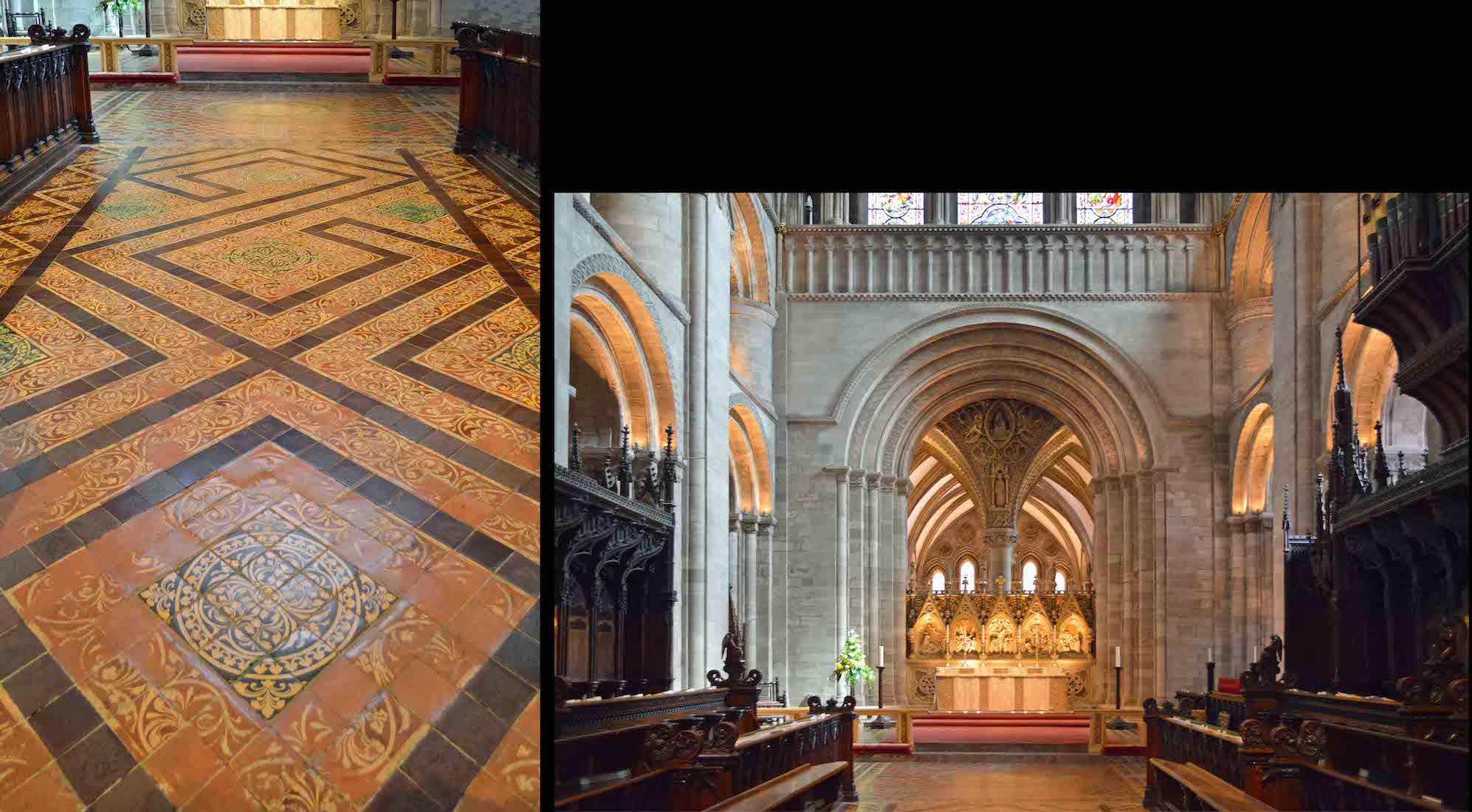
The way to the sanctuary leads past the choir to the high altar, following a tiled path which is showing signs of wear!
123. MISERICORDS
The choir stalls at Hereford have a number of interesting misericords. Historically, a misericord was a shelf beneath a choir seat which monks were able to lean against for support during long services. The creators appear to have had freedom of expression to carve works which were theological or profane!
124. CHOIR ANGELS
The choir stalls are also interesting for the various angelic figures at the ends of the seats.
125. KNEELERS
The choir stalls are also home to various cushions or kneelers with different themes, very likely prepared by the ladies of the congregation.
126. SACRAMENT HOUSE AND CATHEDRA
As we leave the choir and approach the sanctuary we have the cathedra on our right and the ‘sacrament house’ on our left. The cathedra is easy: it is the bishop’s throne, and the source of the word ‘cathedral‘ for this church. The ‘sacrament house’ is clearly where the Elements of the Eucharist are stored, but the name and object are new to me. Churches often have a built-in aumbry, and Catholic churches have a ‘tabernacle’ for this purpose, but this seems significantly different.
127. SANCTUARY DECORATION AND SEDILIA
Coming to the sanctuary we notice a set of sedilia or seats on our right. This is traditional seating in cathedrals, and is often constructed in stone or marble. The view at left is the top of the column immediately behind the sanctuary reredos. It is ornately carved.
128. HIGH ALTAR
The altar itself is quite plain and bears six candlesticks. Behind stands an ornated reredos supported by six round columns, each surmounted with an angel. The reredos has five niches, each depicting a scene. From left we see: Jesus and the disciples in the garden, Jesus on his way to the cross talking to the women of Jerusalem, the Crucifixion, the Resurrection, and ? .
129. HIGH ALTAR REREDOS DETAIL
Shown here is some of the great detail of the carving of the reredos. It is unusual in that Jesus is shown on the Cross with his head to the right.
130. CATHEDRAL AT NIGHT
This completes our tour of Hereford cathedral, and we leave it as night falls.
CONCLUSION
In his book ‘England’s Cathedrals’, Simon Jenkins gives Hereford a score of 3/5. He may be right, but I have found this cathedral to be one of the most interesting of England’s cathedrals. I hope you have enjoyed visiting it with me.
I am happy to receive constructive comments or corrections concerning this website. The best websites are the ones which have no errors! I am grateful to my wife Margie who came with me, and who has proof-read these pages.
Except where acknowledged all the photos here are mine, but as usual I take little credit for the text. For this I have drawn on the Cathedral website, various Wikipedia sites, and Aidan MacRae Thomson’s extensive array of photos with commentary on Flickr, and am pleased to acknowledge these sources.
The link for the Cathedral website is:
https://www.herefordcathedral.org/
The photographs which appear on this site can also be found in higher resolution at:
https://www.flickr.com/photos/paulscottinfo/albums/
Paul Scott Site created 10 / 2019
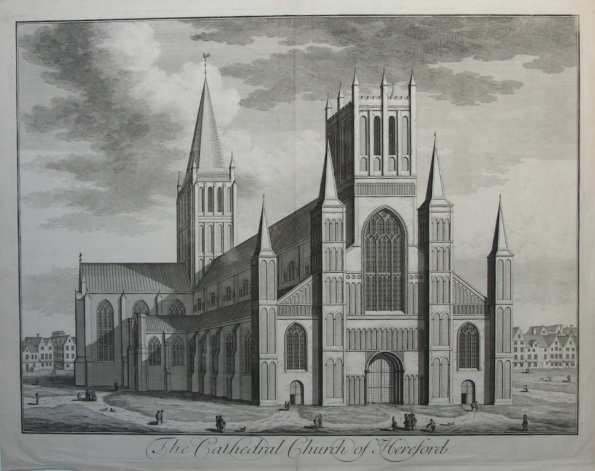
The Cathedral with its spire and Western tower ...

